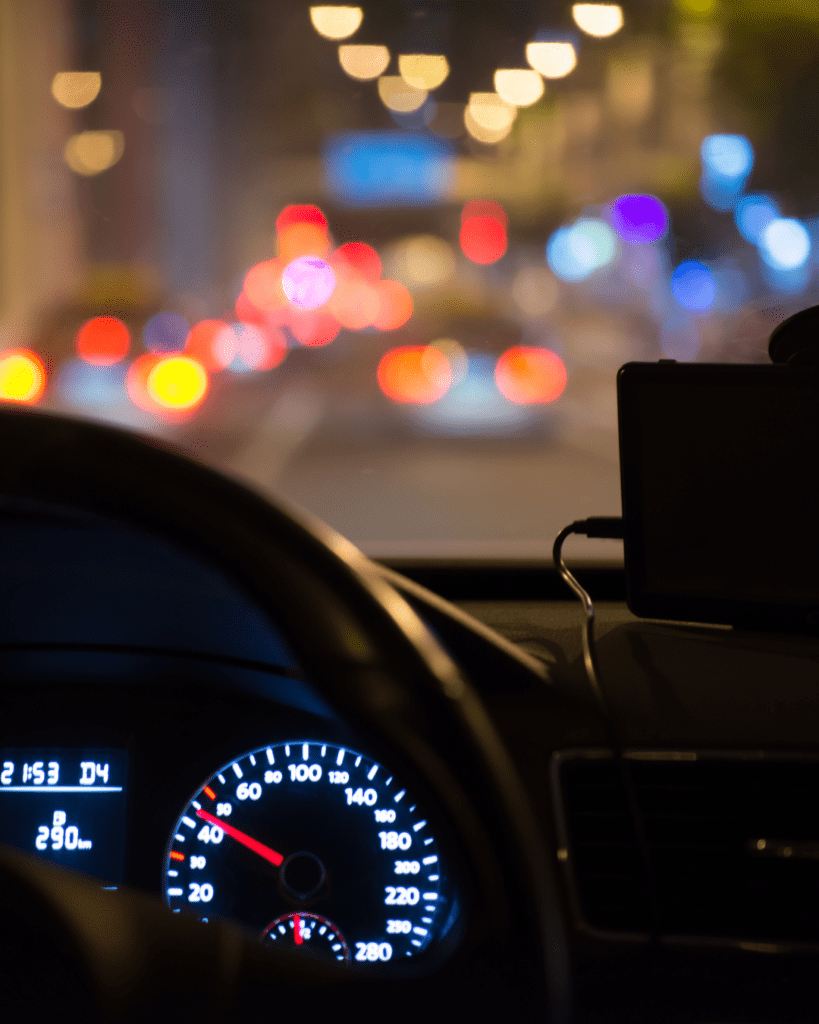At Viles and Beckman we are dedicated to advocating for our clients when they experience an injury, often those who are victims of an auto accident that was not their fault. While we will always be here for members of our community who experience an injury, we know that the best case in the one that never happens because all members of our community were educated about hazards and are able to keep each other safe. This month the National Sleep Foundation recognized Drowsy Driving Prevention week to bring attention to the potential hazard that comes from drowsy driving.As the sun sets earlier and days get shorter, it’s important that we all pay attention to the often-forgotten danger of drowsy driving. With the holidays coming up everyone is busy and hectic personal lives and work schedules combined with changing our clocks will result in many drivers on the road in the dark, raising the risk of drowsy driving.What is Drowsy DrivingDrowsy driving occurs when a person operates a vehicle while experiencing fatigue. Generally, drowsy driving is when a person gets behind the wheel while they’re tired. Drowsiness can lead to falling sleep at the wheel, though it is dangerous long before fatigue escalates to the point of falling asleep while driving.In our fast-paced world, we are all used to doing things while we are sleepy. Anyone who’s ever had their sleep interrupted by a crying baby, busy schedule, or a new season of their favorite show knows that it can feel impossible to get enough sleep. So, we tiredly stumble through shifts, phones calls, and grocery shopping half asleep. This normalization can make drivers think that there is nothing wrong with driving while they’re tired but, in reality, fatigue impairs a drivers focus similarly to driving under the influence of drugs or alcohol. The effects of driving while drowsy are:
- Slower reaction times: Tired drivers cannot react to sudden changes in traffic as quickly as drivers not experiencing fatigue.
- Reduced attention: Sleep deprivation makes is harder to stay focused on the road.
- Poor decision-making: Fatigued drivers are more likely to make unsafe decisions while driving such as speeding, tailgating, or failing to yield.
- Microsleep: While drowsy drivers can experience brief moments of their brain “shutting down” often without them realizing it.
Drowsy driving can happen to anyone, but there are factors that increase the likelihood, including long hours, shift work, and lack of sleep. The youngest drivers, between the ages of 16 and 25 are the age demographic at the greatest risk of falling asleep at the wheel. Tired drivers, especially those who have been awake for extended periods of time, have a higher chance of causing accidents. Know the RisksThe Florida Department of Highway Safety and Motor Vehicles considers drowsy driving a serious public safety concern that contributes to a significant number of crashes and fatalities in the state.It’s difficult to pin down exact statistics of auto accidents related to drowsy driving, but the AAA Foundation for Traffic Safety estimates:
- Approximately 328,000 drowsy driving crashes occur annually
- Approximately 109,000 of those crashes result in injury
- Approximately 6,400 of those crashes result in fatality
- Approximately $12.5 million in damage is caused by drowsy driving annually
Expect More, Receive More: Legal Support That Feels Like Family
This prevalence of drowsy driving accidents makes it clear that this is a serious problem that every driver needs to be aware of. The negative effects of drowsy driving become worse the more sleep deprived a person gets. While any fatigue is dangerous while driving, reaction times, awareness of hazards, and ability to sustain attention all worsen the drowsier a driver becomes. Driving after experiencing more than 20 hours without sleep is the equivalent of driving with a blood-alcohol concentration of 0.08% which is the legal limit in the United States.
- Occur most frequently between midnight and 6 a.m., or in the late afternoon. At both these times in the day, people experience dips in their circadian rhythm-meaning the human body’s internal clock encourages them to sleep at these times.
- Often involve only a single driver running off the road at high speed with no evidence of breaking.
- Frequently, they occur on rural roads and highways.
Florida roadways, including major highways, can present unique challenges for drowsy drivers. Florida highways tend to have fewer elevation changes or curves due to Florida’s terrain. Long road trips and late-night drives, especially for those heading to vacation destinations who are not used to Florida driving conditions, can lead to fatigue and reduce driver’s ability to make decisions while driving. This is especially true for commercial truck drivers who operate large vehicles for long hours.
Know the Signs
All drivers have a duty to keep their community safe through making the most responsible decisions possible every time they get behind the wheel. This week, it’s important to remember that this duty includes recognizing the signs of drowsiness while driving. Drowsy Driving signs include:
- Difficulty keeping your eyes open: If while driving you begin to have difficulty keeping your eyes open or difficulty reopening them while blinking this can be a sign of drowsy driving.
- Frequent yawning: Most people probably know that yawning is a good sign that they’re tired. It’s important to pay attention to this sign while driving because frequent yawning is an indicator that a driver is experiencing fatigue.
- Inability to remember the last few miles driven: Many drivers know the experience of driving their familiar commute after a long day of work and then they suddenly find themselves at home with no memory of the drive. This is a good indicator of fatigue that could be affecting the driver’s ability to make decisions behind the wheel.
- Drifting between lanes or onto the shoulder: If while driving you start to struggle to keep the car between the lanes and begin drifting to one side or the other it can be a result of fatigue.
- Missing Traffic Signs: While driving drowsy it can be difficult to be aware of your surroundings, which can lead to drivers not noticing traffic signs, lights, or hazards on the road.
- Blurred vision or difficulty focusing: Anyone who has ever stayed up late studying for a test or binge watching the newest season of Bridgerton is familiar with feeling your vision blur. It’s not hard to see how not being able to focus on the things your eyes are seeing can be hazardous on the road.
If you are experiencing any of these symptoms while driving, you can potentially be driving while drowsy, putting yourself and others at risk. This means that it is not safe to drive, and you need to pull over immediately as soon as it’s safe. The National Highway Traffic Safety Administration recommends pulling over for a short 20-minute nap in a safe place. They recommend a safe place as a well-lit, designated rest stop. Things like drinking coffee or energy drinks are not sufficient to counteract the effects of drowsy driving. It might make you feel more alert for a short time, but the effects are temporary. Coffee and energy drinks may not make you as aware as you think you are. If you are seriously sleep-deprived, after drinking coffee or energy drinks you might still experience “micro-sleeps”. These are brief losses of consciousness that can last for four to five seconds. If you experience micro-sleep while driving at 55 miles per hour you could travel more than 100 yards while you’re asleep. This is more than enough time for an accident to occur.Prevent Drowsy DrivingIt’s important to know the signs of drowsy driving in order to protect yourself, your family, and our community. Even more important than awareness is prevention. It’s the duty of every driver to take every necessary precaution to ensure that their ability to drive is not impaired.The best ways to prevent drowsy driving are:
- Get enough sleep before you drive.
- Read the warning labels on your medications and do not drive after taking medications that cause drowsiness.
- On long trips take a break every 100 miles or two hours.
- Avoid driving at times you would normally be asleep.
- Use the “buddy system” on long drives to switch drivers allowing each driver an opportunity to rest.
- The Florida Department of Transportation maintains multiple rest areas, service plazas, truck comfort stations and welcome centers throughout Florida which are great places to stop and take a break.
- If you have been up for 24 hours or more, do not drive.
Our 5-Star Promise to the CommunityWe can all do our part to keep our families and our community safe from the dangers of drowsy driving. We at Viles and Beckman are committed to preventing tragedy on our roads by educating our community to the risks of drowsy driving and how to prevent this driving hazard. And when tragedy does strike and an injury occurs, we’re committed to advocating for our clients to get the settlement that they deserve while delivering the Viles and Beckman 5-star promise to all our clients. If you experience an injury from a car accident, caused by drowsy driving or any other factors out of your control, we want to be there for not only you, but your family and advocate for you every step of the way.





